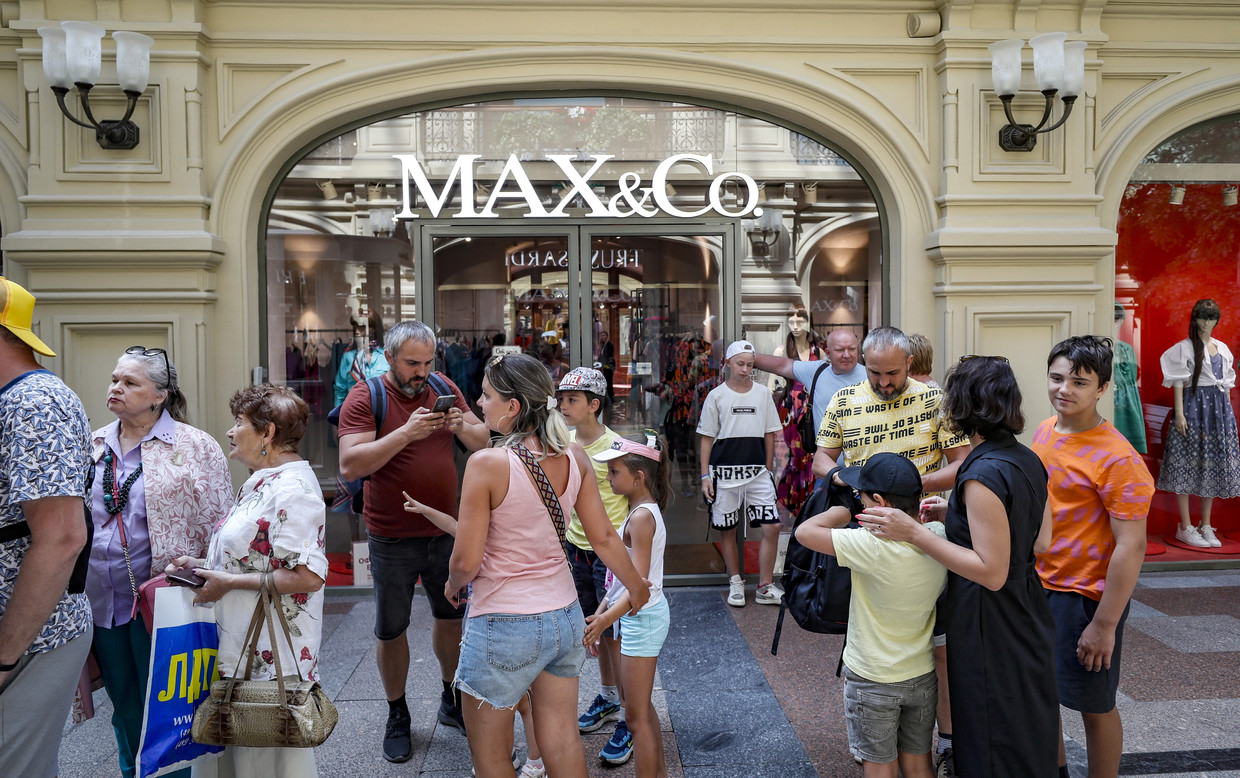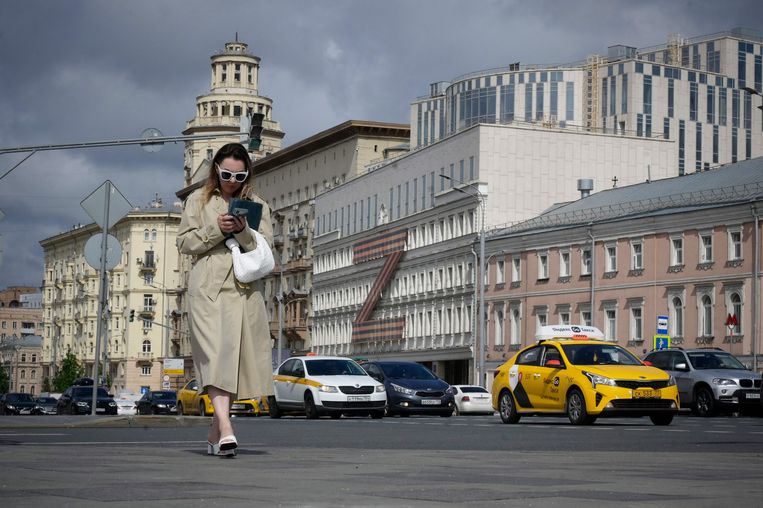Aside from some billboards honoring Russian soldiers and T-shirts bearing the letter Z, there are little indications of the war in Ukraine in Moscow. After four months of struggle, the Russian capital is clinging almost convulsively to some neglect.
You can walk overhead on the Arbat, just like any normal Saturday. There is a commotion from a thousand throats, young people gather around a musician, people stand patiently to take a picture of a street artist, and it is occupied on the terraces. Central Moscow makes a carefree everyday impression.
There is almost nothing here that indicates Russia’s “special military operation”, which takes lives daily in Ukraine. The only exception is the colorful T-shirts with the letters Z or large V hanging in the windows of some souvenir shops, among the T-shirts with Soviet symbols, images of popular music or movie heroes. Russian forces use the letters in Ukraine to identify them on military vehicles and have become a symbol of the campaign against the neighboring country.
The impact of Western sanctions is yet to be seen on the streets, however. This will undoubtedly change as their number increases, which experts say will gradually increase over the coming months. What is notable is the departure of many foreign chains of stores from the capital’s large shopping centers, where increasingly closed shutters can be seen. McDonald’s exit from malls has had a tangible impact on visitor numbers, as has the collapse of the supply of Western films in movie theaters.
work as usual
From the center of Moscow to the Ukrainian border, the distance is about 450 kilometers, roughly the distance from Amsterdam to Paris, but the Russian capital is still under the influence of jerky business almost as usual even after about four months. Accidental expressions of protest are meticulously nipped in the bud and hardly ever reach a wider audience. But direct references to Russian actions in Ukraine are also rare and often hard to find.
This may have something to do with the insistence that the Russian authorities constantly say that “operation” (the word “war” is strictly avoided, and its use can lead to prosecution) in Ukraine “according to plan,” and that all goals will be achieved.

billboards
Most notable are the massive Z applied to the facade of the Tabakov Theatre, and the smaller billboards that can be seen sporadically along the main avenues. With the slogan “Salute to the heroes of Russia!” Are those that are intended to honor Russian soldiers who in one way or another distinguished themselves on the battlefield in Ukraine.
Like Lieutenant Alexander Lebedev, who monitors fast traffic along Sushchevsky Val. According to official information, he came from a village in the Kostroma Prefecture and single-handedly brought out “more than 20 patriots and six military vehicles.”
The portrait of Colonel Roman Demorchev can be seen on the Kutuzov platform, on an electronic board, appearing for a few seconds at a time between advertisements for apartments and vodka. Demorchev, coming from Dagestan, led several successful campaigns against the Ukrainian “nationalists”, according to the Russian Ministry of Defense, and, among other things, prevented them from escaping from the siege.
The letter Z
A little further away, near the government building, road workers are busy renovating the pedestrian walkway, behind fences lined with large banners. It reads “The Square of the Donetsk People’s Republic”, along with pictures showing the flag of the so-called Eastern Ukrainian People’s Republic and several larger and smaller images of war messengers Z and V. On the other side of the road is the US Embassy building complex.
Recently, the Moscow City Council decided, after a quick internet vote, to promote the anonymous intersection in the corner of the embassy complex on a real square, named after the ‘Republic’ that Russia recognizes almost exclusively. This was the reason why the LDPR prematurely opened ‘The Arena’, projecting light images on the embassy buildings, with references to the wars in Iraq and Afghanistan and calls for an end to military support for Ukraine.

However, most of these signals remain relatively unclear. Many passers-by will hardly notice it in a hurry. On those long summer days, the only late-night cues that hard-to-miss pop up: When it gets dark, the lights in some large buildings selectively shine in the shape of an ominous giant Z-shape.
This has been happening since the beginning of the Russian “operation” on the facade of the former 105-meter town hall, at the beginning of the New Arbat. This example was followed in many regional capitals and in Moscow also by the state gas company Gazprom and Russian Railways. Coincidentally or not, one of the railway offices is located directly opposite the courthouse where in recent months many Muscovites have been sentenced to heavy fines for “discrediting” the Russian army.

“Creator. Award-winning problem solver. Music evangelist. Incurable introvert.”







More Stories
British military spy satellite launched – Business AM
Alarming decline in the Caspian Sea
Lithuania begins construction of military base for German forces